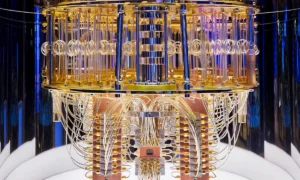Welcome to a new era of customer service interactions! Gone are the days of waiting on hold, frustrating phone menus, and impersonal support agents. Thanks to the power of Artificial Intelligence (AI), chat boxes have taken center stage in revolutionizing how businesses connect with their customers. In this blog post, we will dive into the world of AI-powered chat boxes and explore how they are reshaping customer service interactions as we know them. Get ready to discover a whole new level of efficiency, personalization, and satisfaction for both consumers and businesses alike!
Introduction to AI-powered Chat Boxes
With the advancement of technology, businesses are constantly seeking new and innovative ways to improve their customer service interactions. One such technology that has gained significant attention in recent years is AI-powered chat boxes. These chat boxes, also known as chatbots, use artificial intelligence to mimic human conversation and provide automated responses to customer inquiries.
AI-powered chat boxes have revolutionized the way companies interact with their customers by providing real-time assistance, 24/7 availability, and personalized experiences. Unlike traditional methods of communication like phone calls or emails, where customers often experience long wait times and delayed responses, chatbots allow for instant communication and quick problem-solving.
Benefits of AI in Customer Service
AI-powered chat boxes are quickly becoming a valuable tool for customer service interactions. With the ability to learn and adapt, artificial intelligence (AI) technology is transforming traditional methods of customer service into more efficient and personalized experiences. In this section, we will delve into the specific benefits of AI in customer service and how it is revolutionizing the industry.
1. Enhanced Efficiency:
One of the main advantages of using AI in customer service is its ability to handle large volumes of inquiries simultaneously, without any delay or human error. This means that customers can get their issues resolved much faster, leading to increased satisfaction and loyalty. Moreover, AI technology can work 24/7, providing round-the-clock support for customers across different time zones. This reduces wait times and increases overall efficiency of customer service operations.
2. Personalized Interactions:
With AI-powered chat boxes, businesses can offer a more personalized experience to their customers by analyzing data from previous interactions. By understanding customer preferences and behavior patterns, AI algorithms can provide tailored responses and recommendations to individual inquiries. This level of personalization makes customers feel valued and understood, resulting in a higher level of satisfaction with their overall experience.
3. Cost-effectiveness:
Incorporating AI technology into customer service operations also offers significant cost savings for businesses in the long run. With automated responses handling basic inquiries and tasks, companies can reduce staffing costs while still maintaining high quality support for their customers. Moreover, as AI continues to learn over time, it becomes more proficient at handling complex tasks, leading to further cost savings and increased efficiency.
4. Improved Customer Insights:
AI technology also enables businesses to gather valuable insights into customer behavior and preferences. By tracking interactions and analyzing data, companies can understand customer needs and pain points more accurately. This information can then be used to make informed decisions for product or service improvements, tailored marketing campaigns, and overall business strategies.
5. Multilingual Support:
AI-powered chat boxes can be programmed to communicate in multiple languages, allowing businesses to cater to a global customer base without the need for hiring multilingual support staff. This not only saves costs but also improves the overall experience for non-native speakers who may feel more comfortable communicating in their native language.
6. Reduced Human Error:
Unlike human representatives, AI-powered chat boxes are not subject to human error such as fatigue or emotional biases. They provide consistent and accurate responses every time, ensuring a high level of quality in customer service interactions.
How AI Chat Boxes Work
There are several factors that contribute to the functionality and effectiveness of AI-powered chat boxes. In this section, we will explore how these innovative tools work and why they have become increasingly popular in customer service interactions.
1. Natural Language Processing (NLP):
One of the key components of AI chat boxes is their ability to understand and process natural language. NLP is a branch of artificial intelligence that enables machines to analyze, interpret, and generate human language. This means that AI chat boxes can comprehend complex sentences, slang, typos, and even different languages. With advanced NLP algorithms, these chat boxes can “learn” from previous conversations with customers to improve their responses over time.
2. Machine Learning:
AI chat boxes also utilize machine learning techniques to continuously improve their ability to interact with customers. Through constant exposure to new data sets and feedback from users, these systems can adapt and make connections between words or phrases that are related but may not be identical in meaning. This allows the chat box to provide more accurate responses based on context rather than just keyword matching.
3. Pre-defined Variables:
To ensure a seamless conversation flow with customers, AI chat boxes are programmed with pre-defined variables such as frequently asked questions (FAQs), product information, and specific keywords related to the company’s products or services. These variables act as a knowledge base for the chat box to draw information from when interacting with customers.
Personalization and Human-like Interactions
Personalization and human-like interactions are at the forefront of the revolutionizing power of AI-powered chat boxes in customer service interactions. With the advancements in artificial intelligence technology, these chat boxes are now equipped with features that enable them to understand customer needs, preferences, and emotions like never before.
One of the key benefits of AI-powered chat boxes is their ability to personalize interactions with customers. These intelligent systems can gather data from multiple sources such as customer profiles, purchase history, and browsing behavior to create a personalized experience for each individual. This allows the chat box to tailor its responses and recommendations based on the specific needs and interests of the customer.
In addition to personalization, AI-powered chat boxes also excel in providing human-like interactions. Unlike traditional chat bots that follow predetermined scripts, these advanced systems use natural language processing (NLP) algorithms to understand and respond to customer queries in a conversational manner. This means that customers no longer have to struggle with clunky automated responses but can instead engage in fluid conversations with the chat box.
Moreover, AI-powered chat boxes are continuously learning and improving through machine learning techniques. As they interact with more customers over time, they become smarter, more accurate, and better at understanding context and intent. This results in a more human-like interaction where customers feel like they are talking to an actual person rather than a programmed machine.
Improved Efficiency and Cost Savings
AI-powered chat boxes are transforming the way businesses interact with their customers by improving efficiency and saving costs. With the advancements in artificial intelligence technology, chat boxes are becoming increasingly sophisticated and capable of handling a wide range of customer inquiries.
One of the biggest ways these chat boxes are revolutionizing customer service interactions is through improved efficiency. When customers reach out to a company for support or have a question, they expect prompt and efficient responses. Traditional customer service methods, such as emailing or calling a company’s support line, often result in long wait times and delays in getting a resolution.
However, AI-powered chat boxes have changed this dynamic by providing instant responses to customer inquiries. These chat boxes use natural language processing (NLP) algorithms to understand and respond to human queries. This means that customers no longer have to wait for an available representative to assist them. They can get immediate help from the chat box at any time of the day or night.
Moreover, AI-powered chat boxes can handle multiple conversations simultaneously without compromising on the quality of service provided. This significantly reduces response times compared to traditional customer service methods where agents may only be able to handle one conversation at a time.
Additionally, these chat boxes have access to vast amounts of information about products and services offered by a company. They can quickly retrieve relevant information and provide it to customers in real-time. This ability not only improves efficiency but also enhances the overall customer experience as customers feel like their questions are being answered accurately and promptly.
Real-life Examples of Successful Implementation
The implementation of AI-powered chat boxes in customer service interactions has been widely adopted by various industries, including e-commerce, healthcare, and finance. Through the use of advanced machine learning algorithms, these chat boxes have dramatically improved the customer experience and increased efficiency for businesses.
Here are some real-life examples of successful implementation of AI-powered chat boxes:
1. Amazon’s “Alexa” Virtual Assistant: One of the best-known examples of AI-powered chat box implementation is Amazon’s virtual assistant, Alexa. Designed to provide users with a seamless shopping experience on Amazon’s website, Alexa uses natural language processing to understand and respond to user inquiries about products and services. This has greatly improved the speed and convenience of online shopping for customers.
2. Babylon Health: The healthcare industry has also seen significant advancements in customer service interactions through the use of AI-powered chat boxes. Babylon Health, a digital health startup based in the UK, has developed an app that allows users to talk to an AI-powered interface called “Babylon”. The chat box helps patients assess their symptoms and provides advice on seeking further medical assistance if needed, reducing wait times for doctor appointments and making healthcare more accessible.
3. Bank of America’s “Erica”: The financial sector is another industry that has successfully implemented AI-powered chat boxes in their customer service operations. Bank of America’s virtual assistant, Erica, uses natural language processing and predictive analytics to help customers manage their finances through voice or text commands. It can assist with tasks such as checking account balances, scheduling payments, and even providing financial advice.
4. Starbucks’ “My Starbucks Barista”: In 2017, coffee giant Starbucks launched an AI-powered chat box called “My Starbucks Barista”. Available through the company’s mobile app, the chat box allows customers to order and pay for their coffee using voice or text commands. It also remembers previous orders and can suggest menu items based on a customer’s ordering history.
5. KLM Airlines’ “BlueBot”: KLM Airlines uses AI-powered chat boxes to enhance the customer experience during flight booking and travel. Their virtual assistant, BlueBot, is available through Facebook Messenger and provides customers with personalized flight recommendations, real-time updates on flight status, and assistance with rebooking or cancelling flights.
Addressing Concerns and Limitations
While AI-powered chat boxes have quickly gained traction in the customer service industry for their efficiency and effectiveness, there are still some concerns and limitations that need to be addressed. In this section, we will explore these concerns and provide insights on how businesses can overcome them.
1. Lack of Human Touch
One of the main concerns with AI-powered chat boxes is the lack of human touch in interactions with customers. This can be a major drawback for businesses that prioritize building personal relationships with their customers. Customers may feel frustrated or dissatisfied when interacting with a machine instead of a live person.
To address this concern, it is important for businesses to find a balance between using AI-powered chat boxes and human agents. While these chat boxes are extremely efficient in handling simple inquiries and tasks, they may not be suitable for more complex or sensitive issues that require empathy and emotional intelligence. Businesses should consider training their human agents to handle such cases while letting the chat boxes handle routine tasks, allowing them to focus on building personal connections with customers.
2. Reliability and Accuracy
Another concern surrounding AI-powered chat boxes is their reliability and accuracy in understanding customer queries and providing accurate responses. Since these systems rely on algorithms, there is always a risk of misinterpretation or providing incorrect information which can lead to frustrated customers.
Future of AI in Customer Service
The future of AI in customer service is an exciting and rapidly evolving prospect. As technology continues to advance at a breakneck pace, businesses are constantly seeking ways to streamline their operations and improve the overall customer experience. This has led to the emergence of Artificial Intelligence (AI) as a game-changing tool for customer service interactions.
One of the most significant advantages that AI brings to customer service is its ability to automate repetitive tasks, freeing up human agents to focus on more complex issues. This results in faster response times, improved efficiency, and cost savings for businesses.
In addition to automation, AI-powered chat boxes also have the capability of learning from past interactions with customers. By analyzing data from previous conversations, these chat boxes can tailor responses according to each individual’s needs and preferences. This not only creates a more personalized experience for customers but also improves overall satisfaction levels.
Another key aspect of AI in customer service is its natural language processing (NLP) abilities. With NLP, chat boxes can understand and interpret human language more accurately than ever before. This means that customers can communicate with these chat boxes just like they would with another human being, without having to use complex query structures or keywords.
Due to this advancement in NLP technology, AI-powered chat boxes are now capable of handling even more complex inquiries such as product recommendations or troubleshooting technical issues. Not only does this provide customers with a seamless support experience, but it also allows for faster problem resolution and reduces the need for escalation.
Conclusion
In conclusion, the advancement of AI-powered chat boxes in customer service interactions has greatly improved efficiency and customer satisfaction. These intelligent technologies have shown great potential in understanding and addressing consumer needs, resulting in faster response times and personalized solutions. As businesses continue to embrace this technology, we can only expect these chat boxes to become smarter and more efficient, further enhancing the overall customer experience. With AI-powered chat boxes leading the way, it is an exciting time for the future of customer service interactions.



































